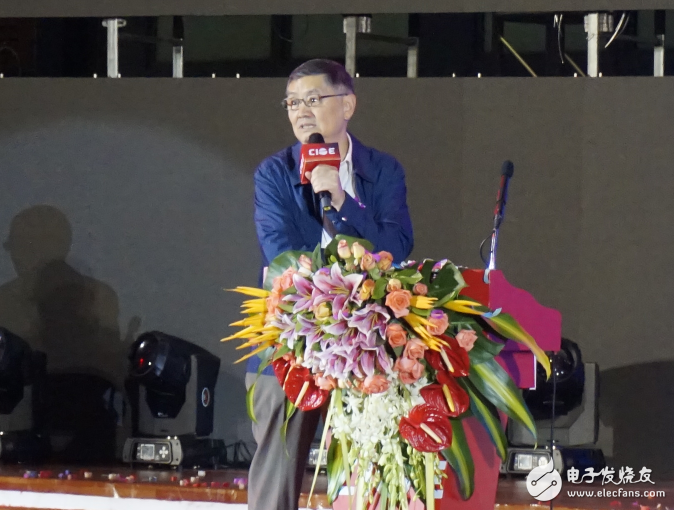On September 5-8, China International Optoelectronic Expo was held in Shenzhen Convention and Exhibition Center. A number of industry guests gathered at the Optical Expo to discuss the development trend of optical communications. Among them, Wei Leping, executive deputy director of the Communications Science and Technology Committee of the Ministry of Industry and Information Technology and director of the Science and Technology Committee of China Telecom Corporation, delivered a heavy speech at the "2018 Global Optoelectronic Industry Technology Conference". Wei Leping, Executive Deputy Director of the Communication Science and Technology Committee of the Ministry of Industry and Information Technology, Director of the Science and Technology Committee of China Telecom Corporation In terms of optical backbone network, Wei Leping pointed out that the industry has already put forward a demand for 400G, but distance and cost are the key. In 2018, Jinghanguang's maximum capacity can reach 35T, and it needs to consume 5×80×100G systems. The demand for 400G is present, but the distance and price are not good. The 4×100G optical module needs to break through, reaching 2.5 times the 100G price threshold. Conventional optical fiber is used in the 400G solution. If dual-carrier 400G PDM-16QAM is used, the distance is 500-600 kilometers, which is suitable for regional networks and long-distance medium transmission distance; if dual-carrier 400G PDM-8QAM is used, the distance is close to 1000 kilometers, which is close to 100G. The hard judgment system is suitable for long-distance and long-distance transmission; if dual-carrier 400G PDM-QPSK is used, the distance is 1200-1500 kilometers, which is suitable for long-distance and ultra-long-distance transmission, but it is difficult to achieve. Therefore, it is necessary to build a programmable optical network that can flexibly adapt to different distances and capacities. If ULL fiber is used, it can be extended by 20%. Regarding the development trend of backbone optical nodes, Wei Leping shared that China Telecom has built 21 ROADM node backbone regional networks in 6 provinces in the middle and lower reaches of the Yangtze River, initially carrying 324 100Gbit/s, direct optical layer, and the longest service route is 1369km. Use 282 20-dimensional WSS Twins. Compared with traditional networking solutions, China Telecom’s ROADM network has achieved many breakthroughs. In terms of saving equipment investment, the number of 0TUs has been reduced by 55%. However, due to the use of ultra-long soft judgment 0TUs, equipment investment can be saved by 15%; in terms of cost reduction , Which can reduce costs by 30-50%, energy consumption and space occupied by about 50%; the most important thing is to realize dynamic networking at the optical layer, enable WSON, and dynamically restore routing, greatly improve fault recovery capabilities and recovery speed, and greatly improve service configuration efficiency , The delay is the lowest, and the wavelength is one-hop direct. It is most suitable for DC dedicated lines and financial customer dedicated lines. At present, 5G has become a hot topic in the industry. In Wei Leping's view, 5G is evolving into a competition for optical fiber infrastructure. 5G enables operators to extend from focusing on wireless networks to end-to-end networks, and the optical fiber network that carries the entire network becomes the key. The role of 5G optical fiber network will not be limited to capacity, connection density and delay, but will change the relationship between wireless network and optical fiber network. The relationship between the two is getting closer and will gradually merge into a unified end-to-end network. In addition to connections, the network architecture, function distribution, topology, equipment form, and even the transmission medium of the 5G optical network will undergo important changes. In 5G transmission, 5G fronthaul is critical. 5G has the most technical difficulty, the most cost-sensitive, and the greatest impact on maintenance efficiency. Among them, in terms of technology, 5G has high speed (25Gbit/s-100Gbit/s), low latency (100 microseconds), and high synchronization clock accuracy (single node nanosecond level). In terms of cost, the number of RRUs/AAUs in the 5G fronthaul is huge, and the cost accounts for 50+% of the access bearer network; and the closest to the user, each RRU/AAU serves the least number of users, and the cost can only be shared by a few users , The cost is very sensitive; the multi-antenna technology greatly increases the fronthaul bandwidth, and the cost is even worse; it consumes a lot of fiber resources, and a traditional base station requires 6 fibers. In terms of maintenance, 5G fronthaul involves the installation, activation, and upgrade of a huge number of RRU/AAU, which has the greatest impact on maintenance efficiency. Regarding the choice of 5G fronthaul technology solutions, Wei Leping said: "In areas with abundant optical fiber resources, the 25G BiDi optical fiber direct connection solution can be used, one optical fiber has one sector; for areas with insufficient optical fiber resources, WDM/OTN, WDM can be used. In the solution, one base station per fiber is used; for areas where the backbone fiber is insufficient, point-to-multipoint WDM PON technology can be used, with N base stations per fiber. all in one energy;all in one battery,home battery,home energy storage,household power storage,home solar power,all in one system Shenzhen Enershare Technology Co.,Ltd , https://www.enersharepower.com